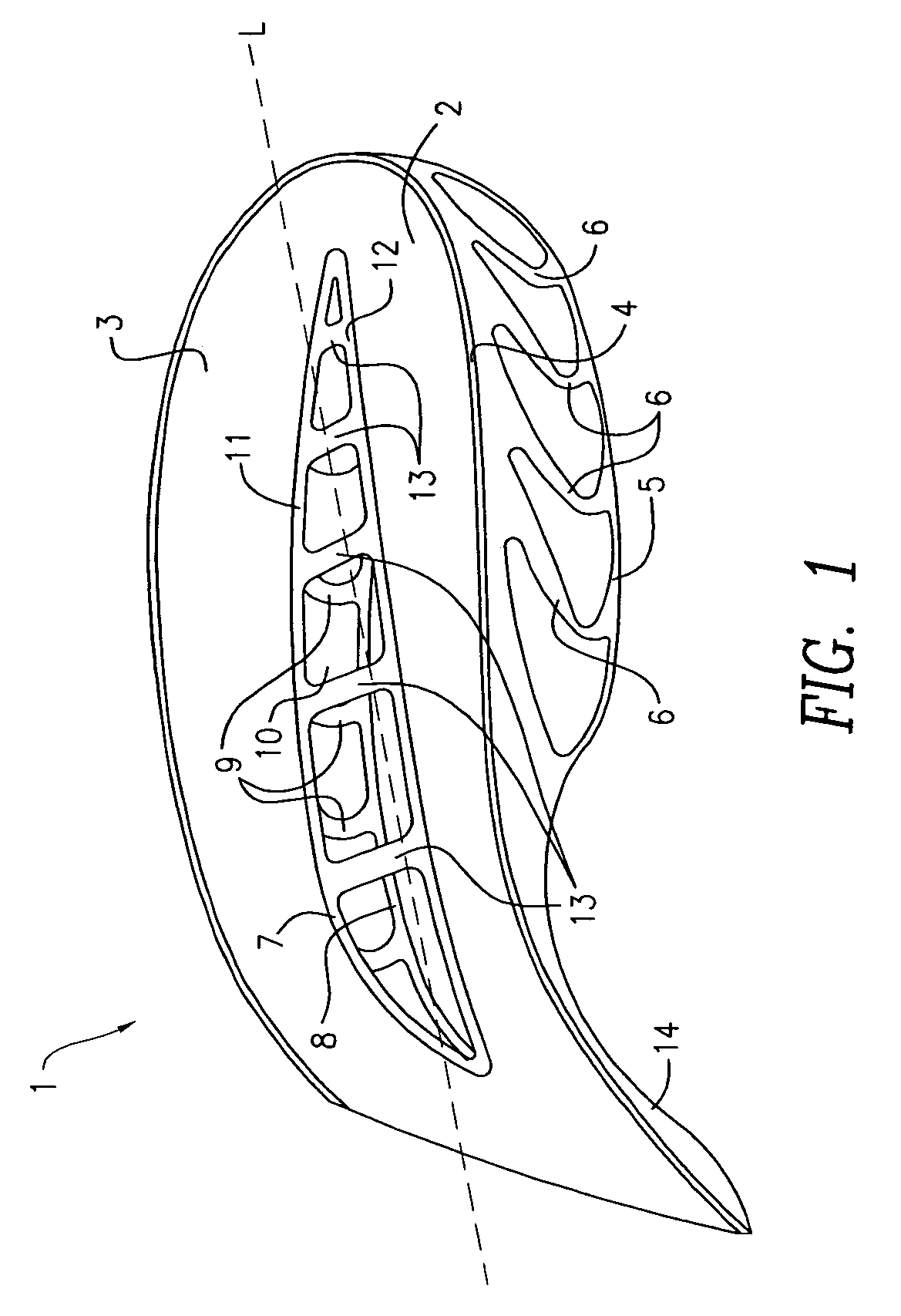Mechanical cushioning system for footwear
a cushioning system and footwear technology, applied in the direction of shoes, top-pieces, heels, etc., can solve the problems of the useful life of foam materials such as the eva foam commonly used in the midsole is limited, and the goal is potentially in conflict with each other, so as to maximize comfort and durability
- Summary
- Abstract
- Description
- Claims
- Application Information
AI Technical Summary
Benefits of technology
Problems solved by technology
Method used
Image
Examples
Embodiment Construction
[0043]The present invention can be better understood from the following description of preferred embodiments, taken in conjunction with the accompanying drawings. It should be apparent to those skilled in the art that the described embodiments of the present invention provided herein are merely exemplary and illustrative and not limiting. All features disclosed in the description may be replaced by alternative features serving the same or similar purpose, unless expressly stated otherwise. Therefore, numerous other embodiments of the modifications thereof are contemplated as falling within the scope of the present invention and equivalents thereto.
[0044]FIGS. 1 and 2 illustrate an exemplary embodiment of a midsole element in accordance with one aspect of the present invention. The midsole element 1 comprises: a medial element 2 and a lateral element 3. The medial element comprises a top medial plate 4, a bottom medial plate 5, and a plurality of medial strut members 6 disposed betwe...
PUM
 Login to View More
Login to View More Abstract
Description
Claims
Application Information
 Login to View More
Login to View More - R&D
- Intellectual Property
- Life Sciences
- Materials
- Tech Scout
- Unparalleled Data Quality
- Higher Quality Content
- 60% Fewer Hallucinations
Browse by: Latest US Patents, China's latest patents, Technical Efficacy Thesaurus, Application Domain, Technology Topic, Popular Technical Reports.
© 2025 PatSnap. All rights reserved.Legal|Privacy policy|Modern Slavery Act Transparency Statement|Sitemap|About US| Contact US: help@patsnap.com



